Answered step by step
Verified Expert Solution
Question
1 Approved Answer
26. Assume you begin with 10.0 g of a radioactive parent isotope. How many grams of parent iso- tope will be present in the
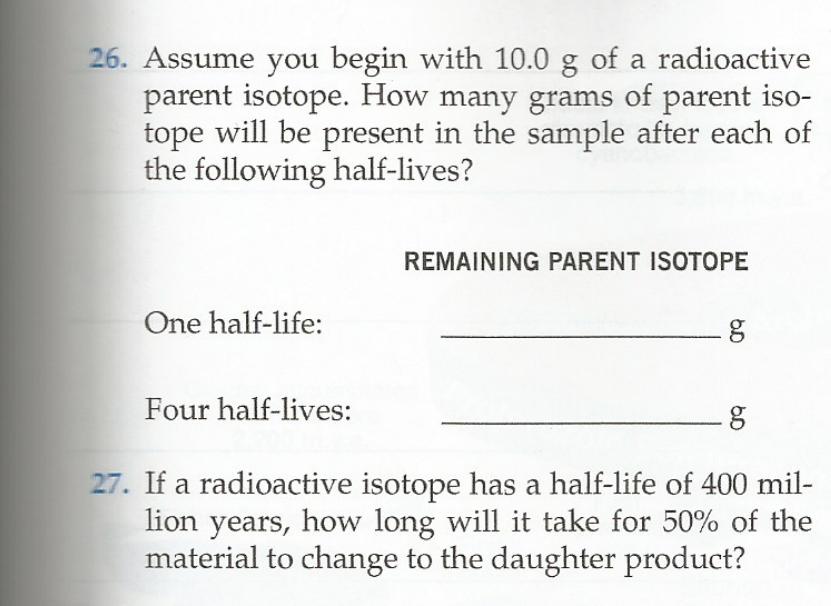
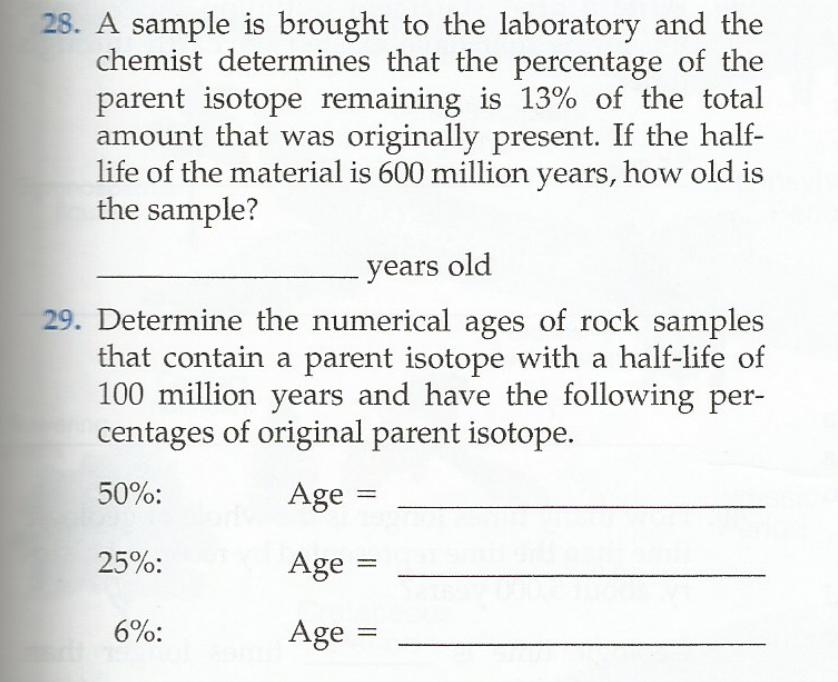
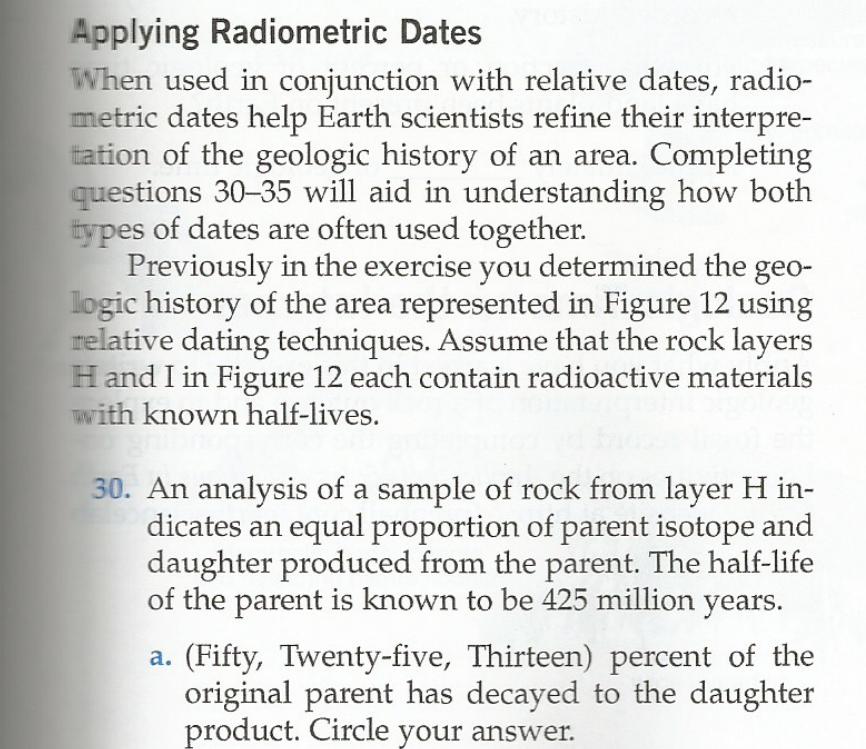
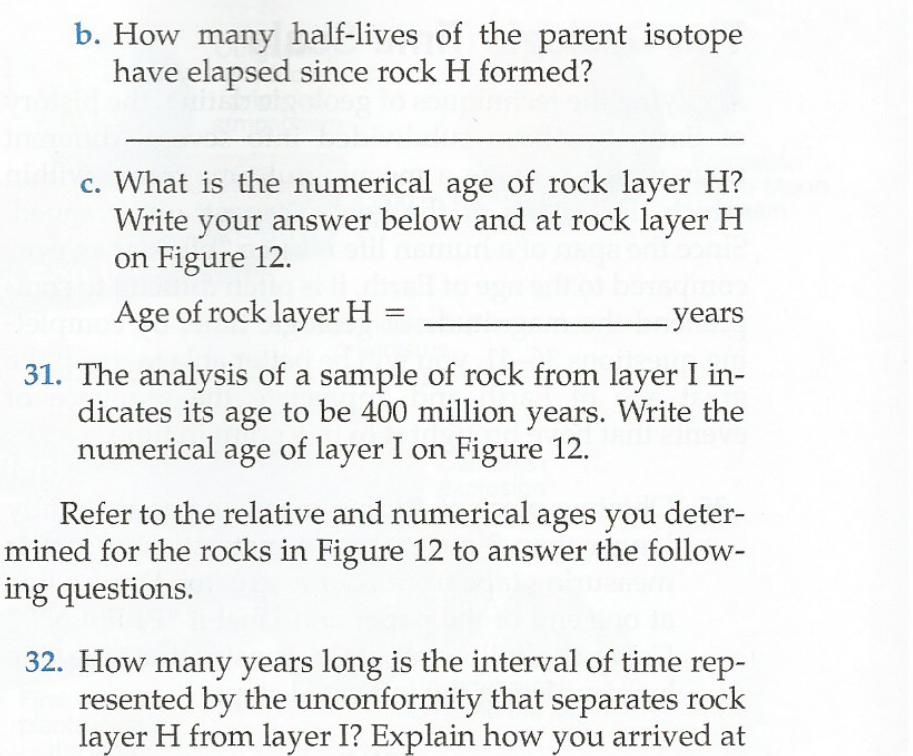
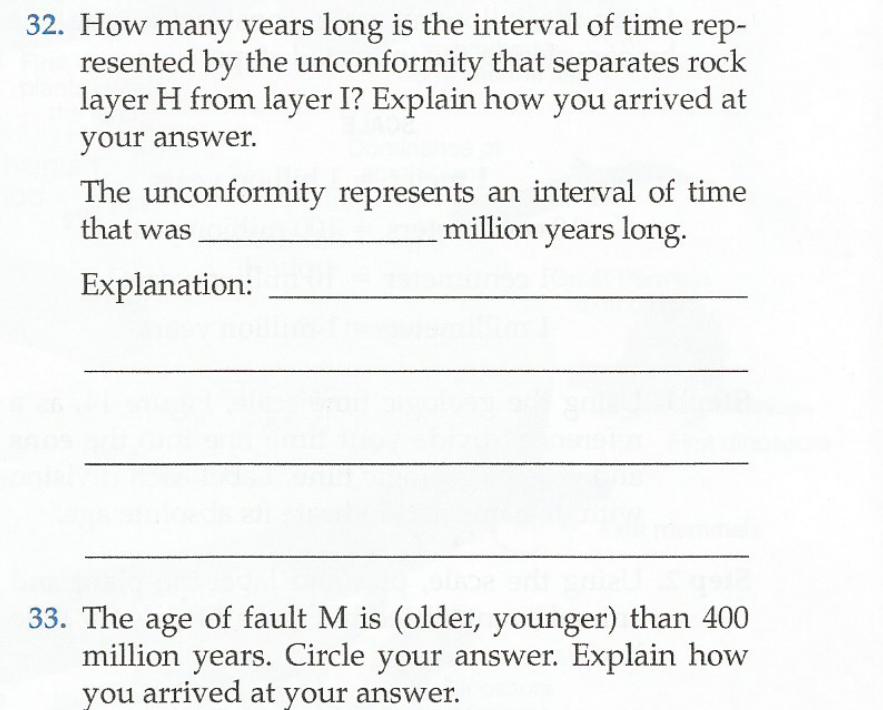
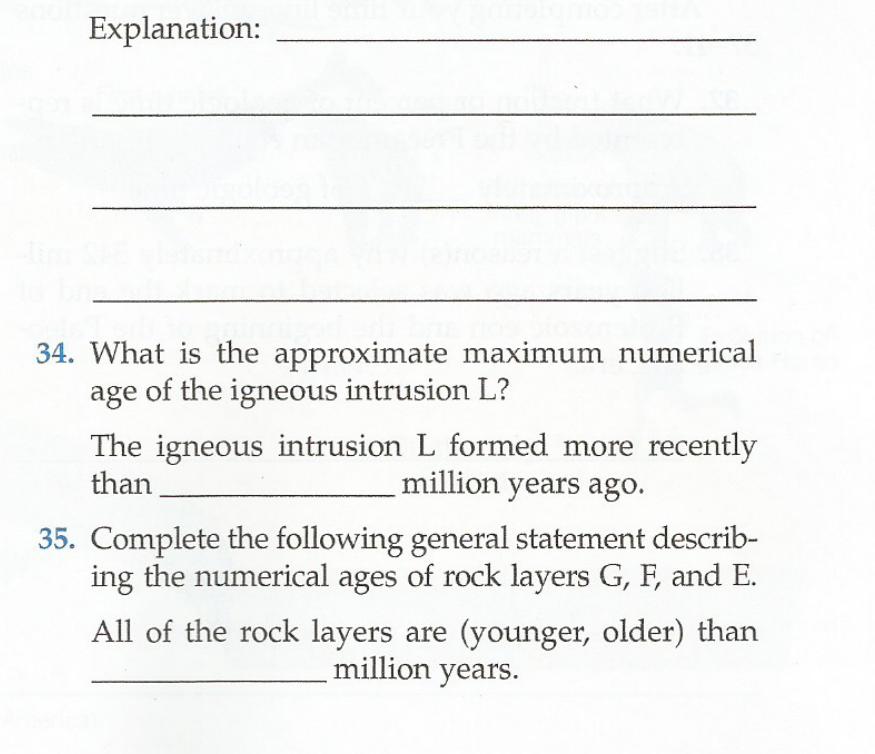
26. Assume you begin with 10.0 g of a radioactive parent isotope. How many grams of parent iso- tope will be present in the sample after each of the following half-lives? One half-life: Four half-lives: REMAINING PARENT ISOTOPE 6.0 g 6.D g 27. If a radioactive isotope has a half-life of 400 mil- lion years, how long will it take for 50% of the material to change to the daughter product? 28. A sample is brought to the laboratory and the chemist determines that the percentage of the parent isotope remaining is 13% of the total amount that was originally present. If the half- life of the material is 600 million years, how old is the sample? years old 29. Determine the numerical ages of rock samples that contain a parent isotope with a half-life of 100 million years and have the following per- centages of original parent isotope. 50%: Age Age: Age= 25%: 6%: = = Applying Radiometric Dates When used in conjunction with relative dates, radio- metric dates help Earth scientists refine their interpre- tation of the geologic history of an area. Completing questions 30-35 will aid in understanding how both types of dates are often used together. Previously in the exercise you determined the geo- logic history of the area represented in Figure 12 using relative dating techniques. Assume that the rock layers H and I in Figure 12 each contain radioactive materials Twith known half-lives. 30. An analysis of a sample of rock from layer H in- dicates an equal proportion of parent isotope and daughter produced from the parent. The half-life of the parent is known to be 425 million years. a. (Fifty, Twenty-five, Thirteen) percent of the original parent has decayed to the daughter product. Circle your answer. b. How many half-lives of the parent isotope have elapsed since rock H formed? c. What is the numerical age of rock layer H? Write your answer below and at rock layer H on Figure 12. Age of rock layer H = years 31. The analysis of a sample of rock from layer I in- dicates its age to be 400 million years. Write the numerical age of layer I on Figure 12. Refer to the relative and numerical ages you deter- mined for the rocks in Figure 12 to answer the follow- ing questions. 32. How many years long is the interval of time rep- resented by the unconformity that separates rock layer H from layer I? Explain how you arrived at 32. How many years long is the interval of time rep- resented by the unconformity that separates rock layer H from layer I? Explain how you arrived at your answer. The unconformity represents an interval of time million years long. that was Explanation: 33. The age of fault M is (older, younger) than 400 million years. Circle your answer. Explain how you arrived at your answer. Explanation: 34. What is the approximate maximum numerical age of the igneous intrusion L? The igneous intrusion L formed more recently than million years ago. 35. Complete the following general statement describ- ing the numerical ages of rock layers G, F, and E. All of the rock layers are (younger, older) than million years.
Step by Step Solution
★★★★★
3.49 Rating (162 Votes )
There are 3 Steps involved in it
Step: 1

Get Instant Access to Expert-Tailored Solutions
See step-by-step solutions with expert insights and AI powered tools for academic success
Step: 2

Step: 3

Ace Your Homework with AI
Get the answers you need in no time with our AI-driven, step-by-step assistance
Get Started


